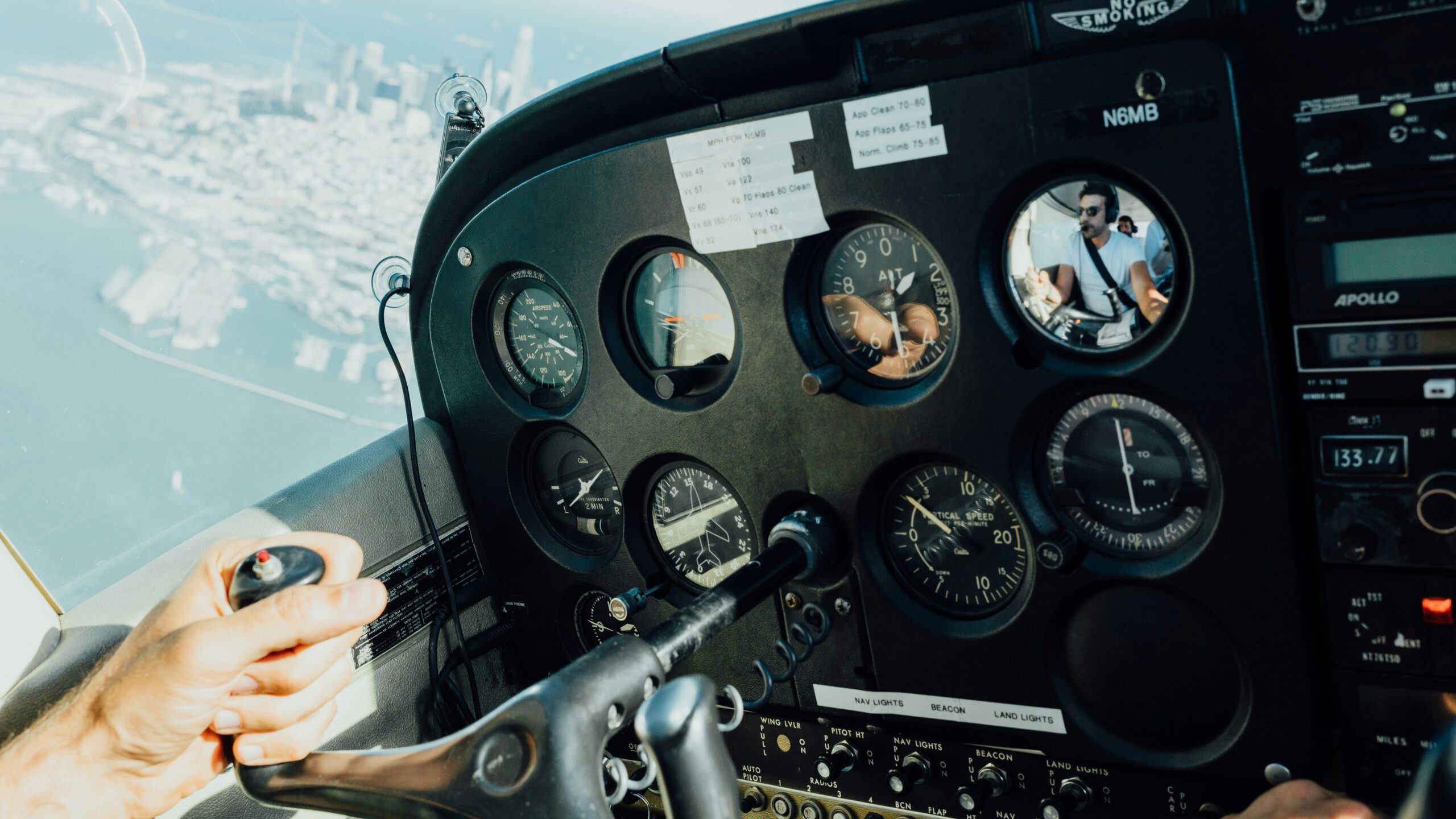Piper Arrow cruise speed, officially known as Piper PA-28R series, was introduced as the development of the popular Cherokee line of Piper Aircraft Corporation in the late 1960s. Designed with extraction equipment and continuous propellers, designed to offer better performance without being easy to handle the arrow. The center of the appeal has a piper pile cruise rate, usually between 135 and 145 knots, depending on the model, height, and atmospheric conditions. It stays in front of many participants with certain sleeves, while maintaining excellent fuel efficiency and pilot-friendly handling properties. But what contributes to the arrow’s impressive cruise?
Table of Contents
1. Factors That Influence Piper Arrow Cruise Speed
Factors that influence the piper arrow cruise speed:
1. The power of the engine and configuration
The Piper Arrow is powered by a Lycoming IO-360 engine, producing 200 horsepower in the Arrow III model. This strong power plant, continuous propellers, and combined with retractable landing equipment, improves aerodynamic efficiency significantly and allows the aircraft to achieve a higher speed than a fixed-gear model.
2. Aerodynamic design
The arrow’s smooth torso and thin wings reduce the drag and improve the air flow, contributing to a smooth and fast cruise. Laminar flow design ensures that the air flows more efficiently on the surface, reduces the disturbance, and increases the ratio of lift to drag.
3. Returnable landing equipment
Unlike his Fast-Gyne brothers and sisters, such as Cherokee Warriors or Archer, Piper Arrow offers a fully pull-out landing equipment. This feature can add more knots to the cruise velocity of the aircraft due to low drag during the flight alone.
2. Why Pilots Love the Piper Arrow Performance
Beyond the numbers, the Piper performance stands out because of how the performance of the arrow feels in the cockpit. Pilots often admire the arrow for their responsive control, stable flight characteristics, and confidence description of flying a well-designed machine.
Many aircraft schools also use pipes for instrument training due to withdrawal equipment and complex systems, which prepare pilots for more advanced aircraft. The extra benefit is that students experience the benefits of Piper Arrow Cruise Motion compared to slow coaches.
In addition, the owner and tenants appreciate the opportunity to maintain good cruise speed even when loaded with passengers and accessories. Whether it is flying solo or full cabin, the Piper Arrow is still a reliable aircraft.
3. Fuel Efficiency and Piper Arrow Cruise Speed
The process of determining a pilot is an important factor in fuel efficiency. Piper Arrow Cruise Speed is not just about going fast – it’s financially about doing it. With a specific fuel burn of about 12-14 liters per hour, the arrow saves a favorable speed-to-fuel ratio. For example, if you fly with 140 knots and burn 13 GPH, you get around 12.3 miles per gallon – a very respectable number in general aviation.
Compared to a bonanza, which can fly 20 sea miles faster but can burn about 16 GPHS, the Arrow looks like a real value offer.
This efficiency becomes especially important for long-distance aircraft, where the range and endurance mean something. The standard fuel capacity of the Arrow is about 77 gallons, which allows for a comfortable selection of about 550-600 knots, all a solid pipe pile cruise rate.
4. Real-World Experience: Flying the Piper Arrow
Flying a pipe pill is more than just killing a certain knot – it’s about the overall experience. From start to landing, the arrow offers a smooth, attractive trip that appeals to both experienced aviators and new pilots who take steps to basic coaches.
The departure is thanks to the 200 hp engine, and the climbing performance is solid, especially when loaded easily. When you are on the way, the cruise settings include returning equipment, blending of the mixture, and sitting in a comfortable speed so they can enjoy the cool of a well-set engine. In the context of comfort, the arrow offers a Revmar cockpit compared to several contemporaries, which have enough legroom and visibility. The panel layout is intuitive, and modern glass upgrades only increase the air experience.
5 . Modifications and Upgrades to Enhance Piper Arrow Cruise Speed
Like many traditional aircraft, the Piper Arrow has seen several aftermarket modifications aimed at improving performance. Some owners opt for engine improvements, aerodynamic improvements, or propeller adjustments to squeeze out each closing knot of velocity.
For example, putting in a 3-blade composite propeller can improve acceleration and cruise overall performance. Similarly, including tip tanks will increase gasoline capacity and barely improve aerodynamics, taking into account longer legs without compromising speed.
Other modifications include:
1. Speed mods
2. Engine tuning and quicker kits
3. Weight discount efforts
4. Cowl plug elimination for cooling optimization
Each of those tweaks can make contributions to a modest growth within the Piper Arrow cruise space, even though they come with trade-offs in cost, complexity, and maintenance necessities.
6. Maintenance and Cost Considerations
Of course, owning a Piper Arrow manner knowing the responsibilities that include a retractable-equipment aircraft. Maintenance fees are commonly better than those of constant-equipment planes due to the increased complexity of hydraulic structures, equipment vehicles, and electric components. However, many proprietors find that the Piper Arrow’s overall performance and cruise speed justify the greater investment.
With proper care, Arrows can stay airworthy and robotically sound for decades, imparting generations of pilots the joy of flying a true classic.
Parts availability continues to be quite sturdy, and there are energetic communities online devoted to Piper Arrow protection, troubleshooting, and overall performance tuning. Whether you are handling a balky gear system or trying to optimize your cruise settings, help is by no means a long way away.
7. Is the Piper Arrow Right for You?
If you are in the market for a versatile, activated, and efficient aircraft, the Piper Arrow is worthy of serious assessment. Piper Arrow Cruise Speed provides a sweet space between raw performance and operating economy, making it ideal for everything from Weekend Gateway to serious cross-country missions.
Here are some landscapes where the arrow shines:
1. Instrument Flight Training: Complex System and Stable Performance make it a favorite among IFR coaches.
2. Family trips: Comfortable seating and decent reach allow for nice trips with minimal stops.
3. Professional use: In many cases, quickly enough to defeat driving and effective enough to keep operating costs appropriate.
4. Aviation enthusiasts: Classic appearance, modern abilities, and a loyal society reward ownership.
8. Conclusion: Soar Smarter, Fly Faster with the Piper Arrow
In conclusion, the Piper Arrow cruise velocity is one of the defining traits that set this aircraft apart from its friends. It combines demonstrated engineering, considerate layout, and actual-world utility right into a package deal that keeps drawing pilots for more than 5 decades after its introduction. Whether you are interested in its historical significance, its mechanical simplicity, or its balanced performance profile, the Piper Arrow gives something for every kind of pilot. And when you component in its Piper Arrow performance, fuel burn, and usual flight revel in, it is smooth to see why this plane remains a beloved staple in general aviation.
So next time you’re considering your subsequent plane buy or condominium, recall: the Piper Arrow lets you soar smarter and fly faster, all even as preserving one eye on the horizon and the alternative on your pockets.
9. Final Thoughts
From student pilots to experienced pilots, pipes are still a reliable companion in the sky. Piper Arrow Cruise Speed cannot break the record, but it protects the constant, predicted performance that pilots like. Whether you fly for fun, business, or exercise, Piper Arrow proves that once, just a little faster – and doing it smartly – is the best way to go.
1. What is the typical cruise speed of a Piper Arrow?
The Piper Arrow typically cruises between 135-145 knots, depending on the specific model, altitude, and atmospheric conditions. This speed range offers an excellent balance of performance and fuel efficiency.
2. What factors contribute to the Piper Arrow’s cruise performance?
Key factors include the 200-horsepower Lycoming engine, retractable landing gear that reduces drag, laminar flow wing design for improved aerodynamics, and the constant-speed propeller system that optimizes engine performance.
3. How fuel efficient is the Piper Arrow compared to other aircraft?
The Piper Arrow is quite fuel efficient with a burn rate of approximately 12-14 gallons per hour, achieving around 12.3 miles per gallon at cruise speeds. This makes it more economical than faster aircraft like the Bonanza, which burns about 16 GPH while only gaining 20 knots in speed.

